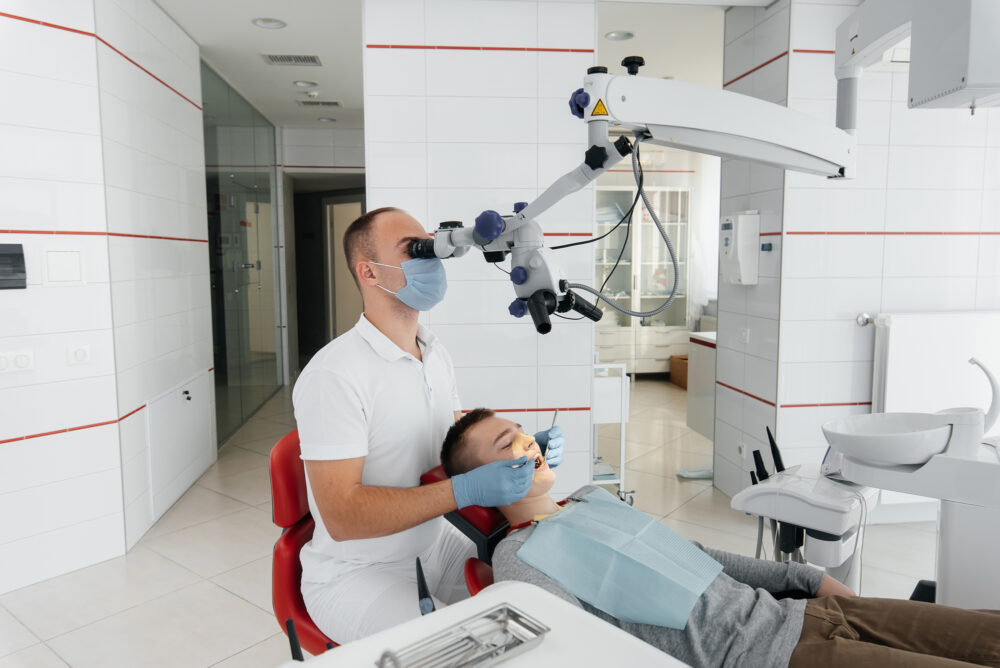The Evolving Integration of Medical, Dental And Teledentistry
Introduction
Are you tired of juggling multiple healthcare providers for your medical and dental needs? Well, good news! The integration of medical, dental, and teledentistry services is rapidly evolving to provide patients with a seamless healthcare experience. From routine check-ups to advanced procedures like dental fillings using modern techniques, this integration is transforming the way we approach oral health. In this blog post, we’ll explore what exactly medical, dental and teledentistry integration means and how it can benefit both patients and healthcare professionals alike. So sit back, relax, and let’s dive into the future of dentistry!
What is Medical, Dental and Teledentistry?
Medical, dental and teledentistry are three intertwined fields that focus on the overall health of a patient. Medical and dental practices aim to provide quality healthcare services to individuals while teledentistry is the use of technology to improve access to dental care.
Dental fillings, modern techniques such as dental fillings and other treatments fall under dentistry. On the other hand, medical practices encompass a broader range of services that include diagnosis, treatment and prevention of diseases.
Teledentistry involves using telecommunication technologies like video conferencing or remote monitoring devices to provide real-time consultations between patients and dentists. This approach has proven effective in providing access to oral healthcare for underserved areas where physical visits may be difficult.
The integration of these three fields aims at delivering comprehensive healthcare services that cater not only for an individual’s physical wellbeing but also their mental well-being. It includes addressing issues such as anxiety associated with visiting health facilities.
Medical, dental and teledentistry are essential components in ensuring individuals receive holistic healthcare services regardless of their location or background. The integration provides opportunities for innovation resulting in better outcomes for both patients and providers alike.
The Need for Integration
The healthcare industry is constantly evolving, with new technologies and practices emerging every day. However, despite the advances in medical and dental care, there has been a lack of integration between these two fields for years.
Medical and dental health are closely linked, as poor oral health can lead to systemic illnesses such as heart disease, diabetes, and even cancer. Dental professionals often identify signs of other conditions during routine exams that physicians may not catch until later stages.
Moreover, teledentistry has emerged as an innovative solution to improve access to dental care in remote areas or for individuals who cannot physically visit a dentist. It allows patients to receive virtual consultations from licensed dentists through video conferencing technology.
Integration among medical, dental and teledentistry is essential because it creates a holistic approach to patient care that improves overall health outcomes by identifying potential issues early on. By working collaboratively with one another through integrated systems of communication and information sharing processes across all specialties will provide better coordination between healthcare providers leading to improved patient satisfaction levels.
Integrating medical, dental and teledentistry services promotes effective communication while improving patient outcomes by providing comprehensive care solutions that meet each individual’s unique needs at any time regardless of their location or circumstances.
The Benefits of Integration
Integration of medical, dental and teledentistry offers numerous benefits to patients, healthcare providers and the healthcare system as a whole. Integration enhances patient care by providing comprehensive health services that are tailored to individual needs. This means that patients can receive both medical and dental care under one roof, which improves access to care and reduces the need for referrals between different healthcare facilities.
Another benefit of integration is improved efficiency in service delivery. By combining medical, dental and teledentistry services into one practice or facility, providers can streamline their operations and reduce administrative costs associated with running multiple practices.
Additionally, integrated health systems promote preventive care by offering routine check-ups for both medical and dental conditions. With modern techniques such as dental fillings being more prevalent than ever before in dentistry today; early detection of oral health problems like cavities could prevent future complications requiring extensive treatments down the road.
Integrating medical, dental and teledentistry services has many advantages which ultimately lead to better patient outcomes while reducing costs for patients, providers and insurers alike.
The Challenges of Integration
The integration of medical, dental and teledentistry is not without its challenges. One major challenge is the difference in training and education between medical professionals and dental professionals. Medical practitioners have little to no training in the field of dentistry, while dental professionals often lack knowledge of systemic diseases.
Another challenge is the reluctance of some patients to seek out oral health care due to fear or financial constraints. This can lead to untreated oral health conditions that may eventually require more extensive treatment.
Additionally, there are legal and regulatory barriers that must be addressed before a fully integrated approach can be implemented. These include issues such as licensure, liability, privacy laws and reimbursement models.
Technology limitations also pose a significant challenge. Although teledentistry has made great strides in recent years, it still requires reliable internet access for effective communication between healthcare providers and patients.
These challenges must be carefully considered and addressed if we hope to achieve successful integration of medical, dental and teledentistry practices for improved patient outcomes.
The Future of Integration
The future of integration between medical, dental, and teledentistry is looking bright. With the advancements in technology and the growing need for accessible healthcare services, we can expect to see more integration across these areas.
One area where we may see significant growth is in telehealth services. As more patients seek remote consultations and care options, innovative approaches like teledentistry will continue to expand. This will provide greater access to care for underserved communities or those who have difficulty traveling for appointments.
In addition, we can expect to see a focus on preventative care through integrated health systems. By bringing together medical and dental professionals under one roof or within one organization, there is an opportunity to prioritize holistic patient wellness with a focus on early intervention rather than reactive treatment.
Another trend that may emerge is personalized medicine. With advances in genomics and precision medicine, there’s potential for customized treatments tailored to each individual’s unique needs and conditions.
The future of integration holds great promise for improving access to care while promoting overall health outcomes through collaboration among healthcare providers across multiple disciplines.
Conclusion
The integration of medical, dental and teledentistry has become increasingly important in today’s healthcare landscape. With advancements in technology and a greater emphasis on patient-centered care, it is clear that these three areas must work together to provide the best possible outcomes for patients.
The benefits of this integration are numerous – from improved communication among providers to more efficient use of resources. However, it is also important to recognize the challenges that come with integrating these different fields.
As we move forward, it will be critical for healthcare professionals to continue collaborating and exploring new ways to integrate medical, dental and teledentistry services. With continued innovation and a shared commitment to providing high-quality care, we can create a more seamless healthcare system that delivers better outcomes for all patients – including those in need of modern techniques such as dental fillings.
Our goal should be to ensure that every patient receives comprehensive care that addresses their unique needs – whether they require medical attention or dental treatment. By working together across disciplines and embracing new technologies like telemedicine and teledentistry solutions, dental SEO experts have an opportunity here, to increase awareness around the importance of oral health; we can build a stronger foundation for healthier communities now –and into the future!


